Fixation of complete LSSS Failure
1. Introduction
Hook plate fixation is indicated for selected cases of acute complete acromioclavicular joint dislocation and for reconstruction of chronic symptomatic acromioclavicular instability.
While many methods are available for acromioclavicular joint fixation, the hook plate does not rely on coracoid integrity and thus is an attractive option when the coracoid is compromised.
One drawback of hook plate fixation is that, following healing of the joint, plate removal is generally required to optimize shoulder range of motion and eliminate residual discomfort from the hardware.
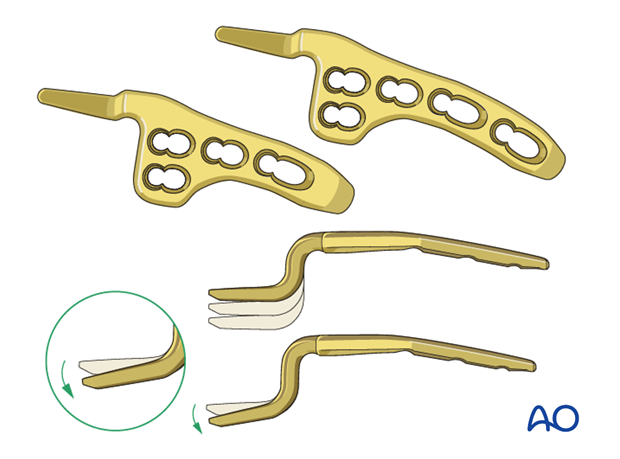
AO teaching video: Lateral Clavicle—Dislocations and Fractures—The LCP Clavicle Hook Plate
2. Reduction and fixation
The hook plate is a powerful tool that can be used to provide an indirect reduction of an acromioclavicular joint dislocation.
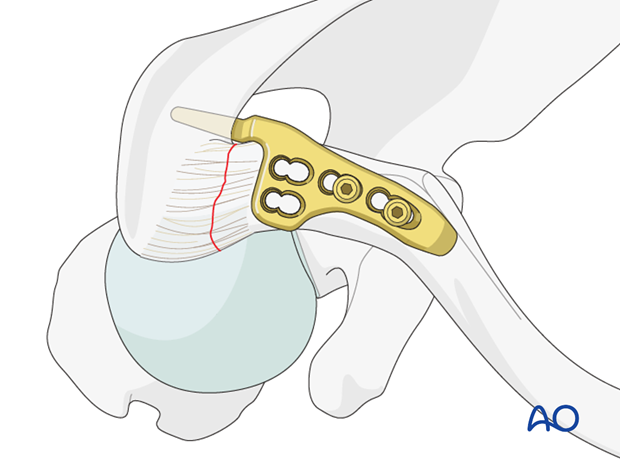
Plate selection
A small incision is made at the posterior aspect of the acromioclavicular joint to allow sub-acromial placement of the hook. The hook portion of the trial hook plate trial is placed in the subacromial space at the posterior aspect of the joint, and the shaft portion of the trial hook plate is then used to lever the clavicle into place.

At this point a trial and error method with the three different trial hook plate depths is used to determine the optimal hook depth for accurate reduction. Typically, the short four-hole hook plate will be adequate for most acromioclavicular joint dislocations.
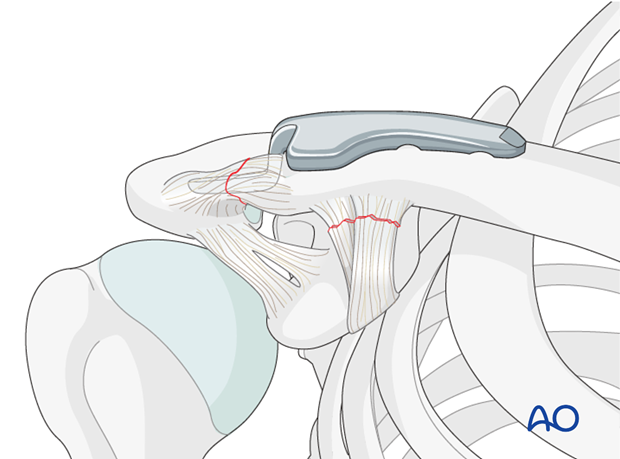
Pitfall: A too great hook depth will result in under-reduction, or residual superior displacement of the clavicle.
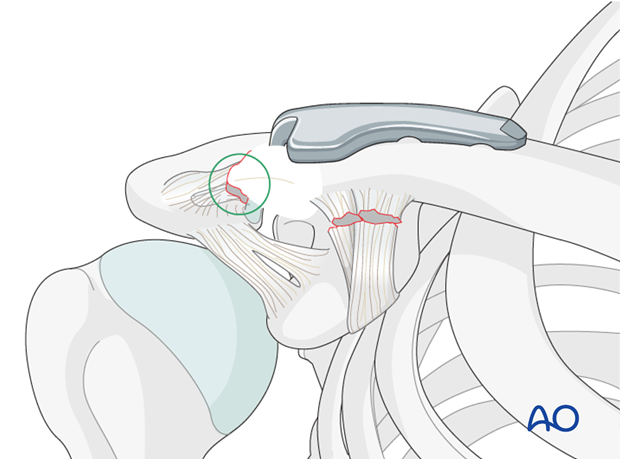
Pitfall: It is important not to over-reduce the clavicle. This occurs when the hook depth chosen is too small, which leads to inferior displacement of the clavicle. This results in an excessive pressure exerted on the acromion by the hook portion of the plate: acromial erosion or fracture can occur.
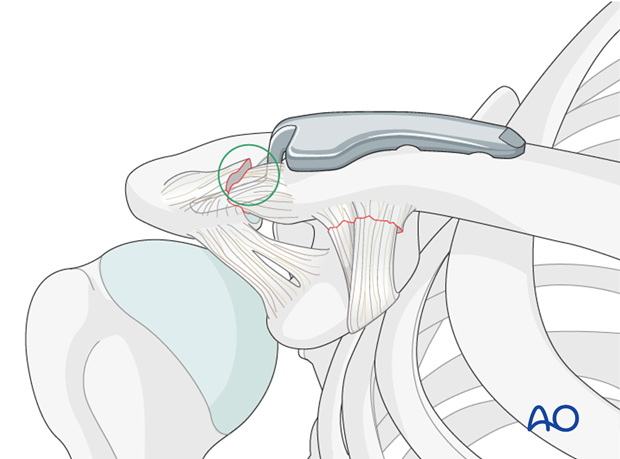
Case: Over-reduction
This is an example of a high grade acute acromioclavicular joint dislocation. Note the preoperative coracoclavicular distance is 19 mm.
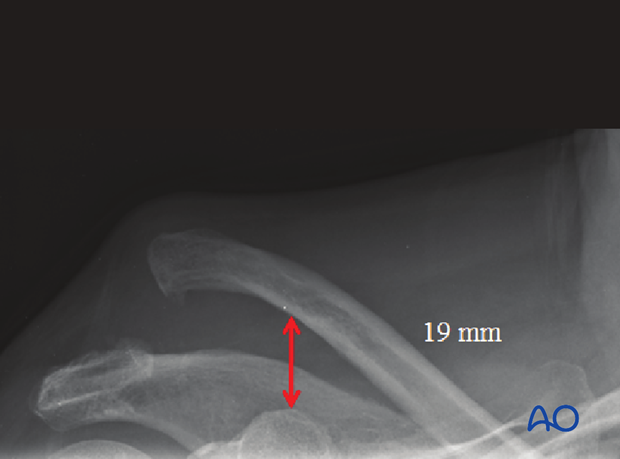
Following hook plate fixation, over-reduction of the clavicle is demonstrated with a decrease of the coracoclavicular distance to 5 mm. This puts severe pressure on the acromion from the tip of the hook plate as can be seen in this postoperative radiograph.
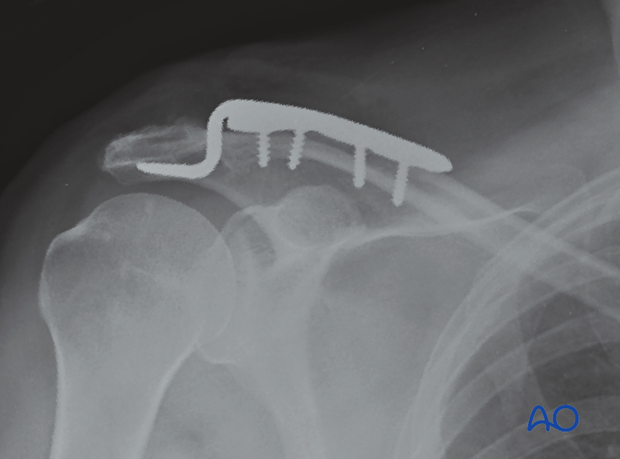
Subsequent erosion of the hook through the acromion occurred as demonstrated in this radiograph. Acromial fracture can also occur. When hook plate mechanical failure occurs, over-reduction is the most common contributing mechanism.
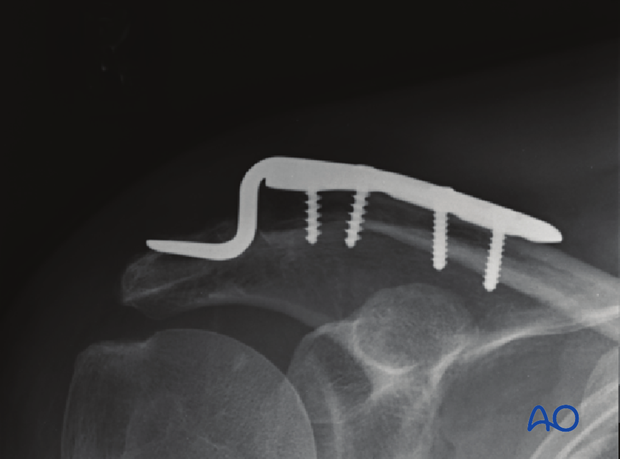
Avoidance of over-reduction
There are a number of intraoperative maneuvers that will help avoid over-reduction. These include:
- Selecting a hook depth that is appropriate for the individual case
- It may be necessary to contour the shaft or hook portion of the plate with the hand held bending irons to optimize plate placement, as anatomy in this area may be quite variable. Care should be taken not to bend he plate or hook repeatedly as this might lead to material failure
- Excessive downward pressure on the clavicle should be avoided as this often results in over-reduction
- A superior bony prominence of the distal clavicle may be resected to provide a flat superior surface for plate placement: this will prevent over-reduction of the clavicle
- In cases where reduction is uncertain, intraoperative imaging with a trial in place will clarify the degree of clavicular reduction and can aid in correction of any over-reduction

Hook placement
At this point, the definitive hook plate is applied to the fracture.
Correct placement of the hook portion posteriorly under the acromion aids in reduction and avoids rotator cuff impingement.
The hook portion of the plate resists downward displacement of the arm through its position under the acromion.
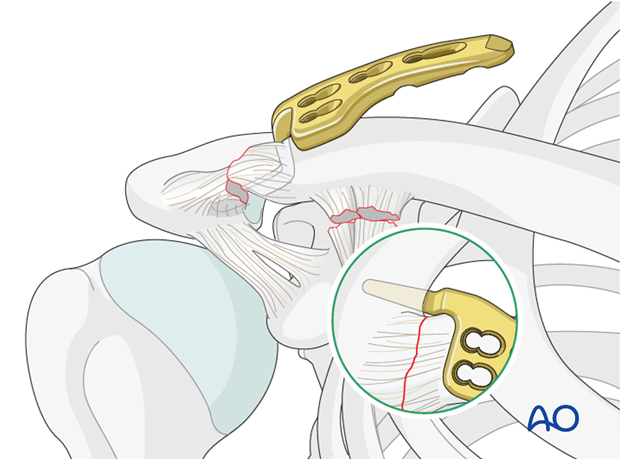
To avoid excessive stress on any screw, insert first the screw closest to the fracture and tighten until appropriate resistance is felt. This may leave the plate proud but...

…sequential insertion of the following screws should approximate it to the clavicle and result in accurate reduction. Note this can be done only if regular screws are used. Locking screws are contraindicated for such a maneuver.
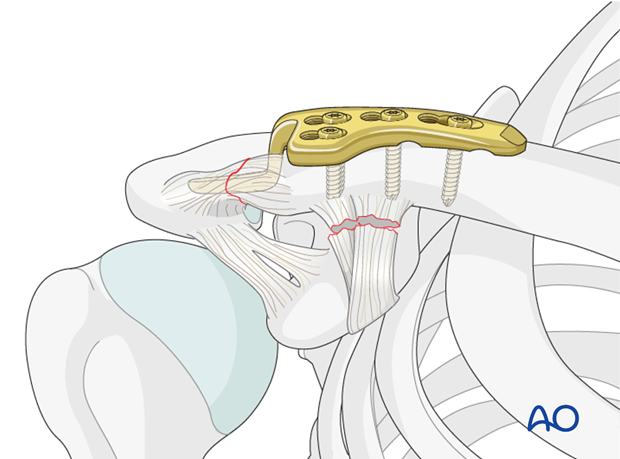
If feasible, the coracoclavicular ligaments and the AC ligaments should be repaired with sutures.

3. Check of osteosynthesis
At the conclusion of fixation, the joint, plate, and screws are carefully checked to ascertain accurate reduction, correct plate placement, and avoidance of any intra-articular screw placement. If any doubt remains regarding these findings, and intraoperative radiograph should be taken for confirmation.













